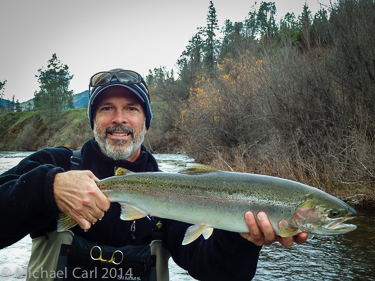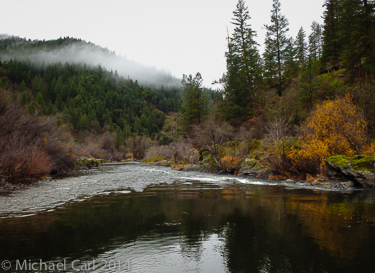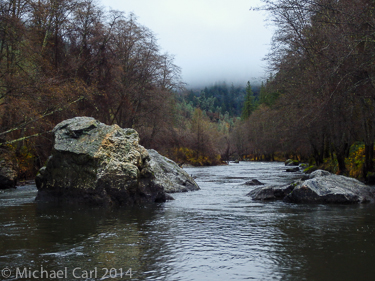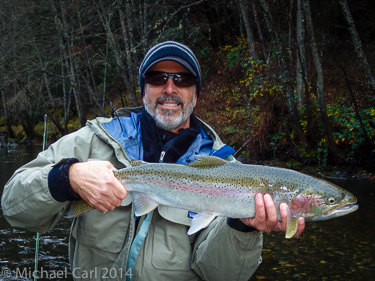The Trinity River
Directions
From Redding From Interstate 5, take Highway 299 going East. Drive about 30 miles (a couple miles before reaching Douglas City) until you reach Indian Creek. (Refer to detailed map here.)
Going a Bit More Wild in 2014 - 2015

I've noticed a subtle and welcome change on the Trinity. I'm seeing a lot more adipose fins these days. In fact, for a couple of days I would say the ratio was better than two wild to every hatchery caught steelhead. That ratio definitely would have been flipped for most of my prior trips to the Trinity. (Check-out the chart at the bottom of this page and note the Wild vs. Hatchery percentages for the months of October through January.)

Here's some data that backs up my experience. One of the weirs on the lower Trinity trapped over 2000 steelhead through early November 2014. The tally was roughly 60% wild and 40% hatchery. What eludes me now is the reason why. I've asked around and no one seems to have an answer. Could it be better ocean conditions? Could it be recent habitat restoration on the Trinity? Could the fishing regs allowing takes of hatchery fish and requiring releases of wild fish be shaping this?

Who really knows? (If you happen to know, or just have a theory - drop me an email.) I would really like to know what's bringing more wild steelhead back. Certainly, an increasing return of wild steelhead would be a welcome change. And certainly one change that most of us would like to see repeated in many West Coast steelhead rivers!

Klamath-Trinity River Steelhead Runs
Steelhead enter the Klamath-Trinity Rivers throughout most of the year. Summer-run adults enter the stream between May 1 and October 30 (1) and hold in the river for several months before spawning. Summer-run steelhead commonly reach Lewiston (RM 112.0) by early June and continue to arrive through July. They enter major tributary streams by August and remain in deep pools until they spawn in February (1). Winter-run steelhead enter the river between November 1 and April 30 and hold in relatively high-velocity habitats, such as riffles and runs; they spawn in April and May (1). Summer- and winter-run steelhead are, therefore, temporally and spatially isolated from each other. They do not interbreed because summer-run adults generally use areas that are farther upstream than areas used by winter-run adults (1).

Reference: (1) Barnhart, R.A. 1986. Species profiles: life histories and environmental requirements of coastal fishes and invertebrates (Pacific Southwest) - Steelhead. U.S. Fish and Wildlife Service Biological Report 82(11.60). U.S. Army Corps of Engineers, TR EL-82-4. 21 pp.
